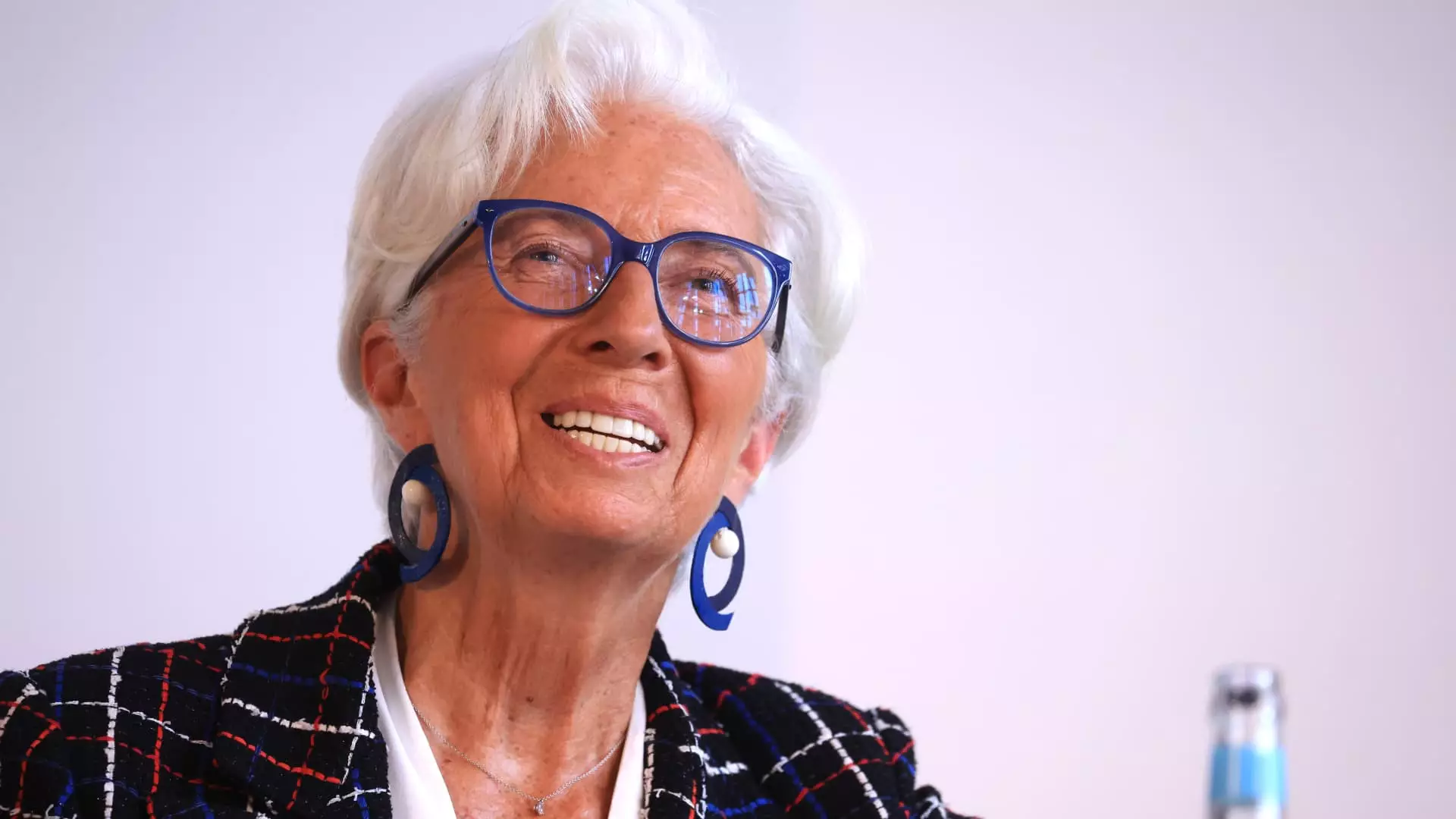On Thursday, the European Central Bank (ECB) revealed a calculated yet audacious decision: a 25-basis-point reduction in interest rates stemming from a confluence of factors involving currency strength and energy prices. The new deposit facility rate now sits at 2%, a remarkable decline from the dizzying heights of 4% earlier this year. This move sends a clear signal, exhibiting the ECB’s acknowledgment of changing economic landscapes. Yet, one cannot help but ponder: is this rate cut a measure of prudence, or does it reflect a deeper self-inflicted wound on the eurozone economy?
Analysts were practically unanimous in their predictions, assigning a striking 99% likelihood to this quarter-point cut leading up to the announcement. But this near-certainty presents a conundrum. While the ECB’s strategic rate adjustment undoubtedly aims to loosen monetary policy, it raises crucial questions about the efficacy of their tools in fostering genuine economic growth. Perhaps this reflects a lack of innovative solutions to combat stagnation; treading further down the path of rate cuts risks numbing the market’s natural mechanisms.
Inflation Expectations Revisited
In what reads as a candid admission of economic setbacks, ECB’s recent evaluations indicate an adjusted inflation outlook: a downward trend. Remarkably, the anticipated inflation rate for 2025 dropped from 2.3% to a more conservative 2%. The reasoning? A healthier euro bolstered by reduced energy costs. While this news may seem cheerful at a glance, one must consider the underlying implications: an economy so fragile that it relies heavily on external factors to shape its fate. Should these favorable conditions shift, the consequences could be dire.
Interestingly, while the forecast for general inflation tanks, core inflation has surged from 2.2% to an expected 2.4% this year. This suggests the possibility of dichotomous inflationary pressures—an irony that could lead to heightened tensions within sectors most vulnerable to cost volatility. These mixed signals from the ECB illuminate the complexities of contemporary economic management within the eurozone, where hoped-for stability might be a mirage rather than a tangible condition.
The Struggle for Growth
Despite the ECB’s maneuvering, the overall economic growth predictions remain underwhelming. The latest figures indicate a modest expansion of only 0.3% in the first quarter of 2025, leading to a stagnant growth outlook of just 0.9% for the year. Such tepid projections evoke skepticism regarding the broader structural challenges plaguing Europe, especially in light of increasing geopolitical tensions. With international trade issues hanging ominously overhead, businesses are understandably nervous.
Moreover, the ECB’s remarks on rising government investments in defense and infrastructure reflect a reactionary approach rather than proactive leadership. Such investments may create short-term stimulus but risk crowding out private sector investment, and without a robust foundation for sustainable growth, the eurozone’s future continues to hang in the balance. The delicate interplay between governmental spending and economic vitality might merely delay deeper issues rather than address them.
Geopolitical Uncertainty: A Cloud on the Horizon
The specter of U.S.-led trade tensions exacerbates the eurozone’s predicament. With Donald Trump’s tariff policies looming large, Europe finds itself bracing for impact across key sectors such as steel and automobiles. The uncertainty bought on by potential retaliatory tariffs poses yet another weight on the already precarious situation. These external pressures can stifle entrepreneurial activity and sow distrust in trade partnerships, further complicating recovery efforts.
The response from the EU leadership has so far been muted, but the promise of retaliatory measures remains a looming threat, signaling a precarious readiness to enter a tit-for-tat economic war that could inflict severe consequences across Europe.
The ECB’s latest decisions reveal more than just a reaction to current trends; they encapsulate a longing to chart a path forward amidst turbulence. However, one must ask: will these measures yield tangible and lasting benefits, or will they merely defer the inevitable reckoning with the structural challenges that lie beneath the surface? The risks are palpable, and the stakes have never been higher for the eurozone’s economic future.


Leave a Reply